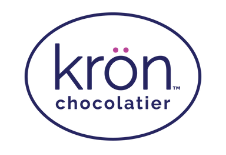Chocolate and wine is considered the most delightful combination to amp up any celebration. After all, every chocolatey treat becomes tastier when paired with wine – from chocolate truffles to chocolate covered strawberries. The reason behind the popularity of pairing chocolate with wine is the perfect balance they strike together. In fact, the richness of chocolate complements the nuanced flavors of wine in the best way. Chocolate, with its varying levels of sweetness and bitterness, interacts beautifully with the diverse flavor profiles found in different wines.
Pairing chocolate with wine isn't just about taste. It's also about the enjoyable sensory experience it creates.
In simple words, the combo of chocolate with wine is a hit because they make each other taste even better. The bitter-sweet chocolate with its velvety texture mellows out the tannins in wines. On the other hand, wine brings the best out of chocolate’s taste, texture and aroma. Plus, the way chocolate melts in your mouth while sipping on a matched wine is just amazing. Let’s find out why pairing chocolate with wine has become a beloved tradition for different occasions.
Why Chocolate and Wine Make the Perfect Pair?
The reason why chocolate and wine pairing works so well is how their flavors interact with each other. When we taste foods, our taste buds detect five primary flavors: sweet, sour, bitter, salty, and umami. In the case of pairing chocolate with wine, their flavors mingle so perfectly due to the way our taste receptors respond to their chemical compounds.
For instance, the bitterness in chocolate comes from compounds like flavonoids and theobromine. On the other hand, tannins, found in grapes contribute to wine's astringency and structure. So, when these tannins interact with the bitterness of dark chocolate, they create a smoother taste. Moreover, the fat content in chocolate can interact with the acidity in wines. As a result, the acidity in wine refreshes the palate after each bite of chocolate and allows you to fully enjoy both flavors. Furthermore, the fruity, floral, or earthy notes in wines complement or contrast with the aromatic qualities of different chocolates.
|
Did You Know? |
|
Both cacao beans and grapes undergo fermentation during the production of chocolate and wine respectively. |
How to Choose the Best Chocolate for Wine
Want to celebrate with chocolates and wine but don’t know how to match both the right way? First, know what is the best chocolate for wine. As we all know, there are three primary categories of chocolate: white, milk, and dark. Undoubtedly, each of these chocolates can go excellently with a variety of wines based on their flavor profile and your taste preferences.
When it comes to the chocolate wine pairing, the goal is to either create a combination that complements each other or craft a unique yet delectable contrast. Following are listed some of the 50 fun facts about chocolate, to help you find out which are the best chocolates for wine:
White Chocolate

White chocolate has a creamy texture and rich, buttery flavor. Unlike other chocolates, it lacks cocoa solids but contains cocoa butter, milk solids, and sugar. That is why it has a sweet and indulgent taste profile. When it comes to pairing white chocolate with wine, you are advised to select wines that complement its inherent sweetness and velvety texture. In particular, light-bodied and sweet wines smoothly pair up with the delicate flavors of white chocolate.
Milk Chocolate

Milk chocolate had a smooth and creamy texture and has a sweeter taste compared to the dark chocolate. Its sweetness originates from the addition of milk solids and a slightly lower cocoa content. Moreover, this composition gives milk chocolate a milder cocoa flavor with a hint of caramel and dairy notes. So, medium-bodied wines with a touch of sweetness or fruitiness can pair splendidly with the creaminess of milk chocolate.
Dark Chocolate

Undoubtedly, dark chocolate is the most intense one out of all the chocolate varieties because of its higher cocoa content. So, it has a rich, slightly bitter taste with complex undertones of earthiness, fruitiness, and sometimes nutty. Considering it’s flavor profile, full-bodied wines with depth and strong flavors often serve as ideal companions to the intensity of dark chocolate.
Ultimately, the key to successful pairings lies in finding a balance between the characteristics of each chocolate type and the varying profiles of wines. Here are some of the recommendations for you to have a delightful experience when having chocolate with wine:
Chocolate Varieties |
Characteristics of Chocolate |
Characteristics of Wine |
Wine Recommendations |
|
White Chocolate |
Creamy, buttery, sweet, no cocoa solids |
Light-bodied, fruity, floral, sweet |
Moscato d'Asti, Riesling, Prosecco, Champagne |
|
Milk Chocolate |
Smooth, creamy, mildly sweet, with milk solids |
Medium-bodied, slightly sweet, fruity |
Pinot Noir, Merlot, Zinfandel, Tawny Port |
|
White Chocolate |
Bold, intense, slightly bitter, higher cocoa content |
Full-bodied, bold, high tannins, complex flavors |
Cabernet Sauvignon, Syrah/Shiraz, Barolo/Barbaresco, Banyuls, Tawny Port, Zinfandel |
Apart from the taste and flavor, there’s more to pairing chocolate with wine. Surprisingly, this delectable pair is also good for your health. But the health benefits of wine are not widely known. Studies link red wine consumption to heart health benefits due to the presence of antioxidants like resveratrol. Additionally, some studies indicate that the antioxidants present in both dark chocolate and red wine have protective effects on brain function. However, the key lies in the moderate consumption of both wine and chocolate.
Tips for Perfect Chocolate-Wine Pairing
Pairing the right chocolate with wine is all about discovering how the flavors complement each other. Whether you are a chocolate lover or a wine enthusiast, this combo can surely entice you – if done right! Anyways, creating the perfect pairing involves a mix of experimentation, understanding flavors, and a dash of creativity. Here are some essential tips to ensure your “chocolate with wine” combinations are a success:
Balancing Flavors and Intensity
Match the sweetness, bitterness, and acidity levels between the chocolate and wine. For instance, if the chocolate is sweeter, opt for a wine with a similar level of sweetness to avoid one overpowering the other. Also, consider the intensity of both the chocolate and the wine. Darker chocolates with higher cocoa content often pair well with full-bodied wines as their bold flavors complement each other. Conversely, lighter chocolates – such as white or milk chocolate – tend to pair better with wines that have a lighter body and less tannin presence.
Experiment Freely
When it comes to pairing chocolate with wine, there are no rigid rules. In fact, a spirit of experimentation opens doors to delightful and surprising flavor combinations. So, don’t limit yourself to conventional pairings. Feel free to mix and match different chocolates and wines. Try contrasting flavors or experiment with wines from various regions and chocolate with varying cocoa percentages. You can even be a little wild and try wine with chocolate covered popcorns. Moreover, this will not only find you innovative combos but it’s also a chance to expand your taste palate.
Presentation Matters
Want to make a statement when hosting a celebration? Display the wines and chocolates in a visually appealing manner. For this, use elegant plating or decorative trays to create an inviting setup for the guests. Moreover, serving a variety of chocolate with wine of different types will take the experience to another level of delight and indulgence. Additionally, consider using appropriate glassware for wines and arrange the chocolates attractively. Use different shaped glasses to optimize the wine's aromas, appeal and flavors.
Ideal Serving Temperature
Perfecting the temperature and presentation when having chocolate with wine will make the overall experience even more delightful. In particular, most wines are best served well-chilled to highlight their effervescence and refreshing qualities. While wines have specific serving temperatures, chocolate's ideal temperature differs. Thus, allow the chocolate to come to room temperature before indulging, to fully enjoy the flavors and textures.
Wine |
Ideal Serving Temperature (°F) |
Ideal Serving Temperature (°C) |
|
Sparkling Wine |
45-48°F |
7-9°C |
|
White Wine |
50-60°F |
10-15°C |
|
Light-Bodied Red |
50-60°F |
10-15°C |
|
Medium-Bodied Red |
60-65°F |
15-18°C |
|
Full-Bodied Red |
60-65°F |
15-18°C |
Chocolate with Wine: The Best Pair for Every Occasion
Adding the “chocolate and wine pair” to your festivities adds an extra layer of sophistication and warmth to them. Whether it's an elegant wedding reception or a casual gathering with friends, chocolates with wine are just the perfect addition to your spread. In fact, chocolate with wine is the biggest cliché of romantic occasions – like an intimate anniversary celebration or a romantic Valentine's Day dinner. It is always a great idea to tailor your pairing per the occasion. For example, pair rich, intense dark chocolate with a full-bodied red wine for a birthday celebration, or opt for a lighter milk chocolate paired with a refreshing white wine for a summer holiday gathering. As aforementioned, pairing the right chocolate and wine together will take your taste-buds on an exciting journey of flavors and indulgence.





